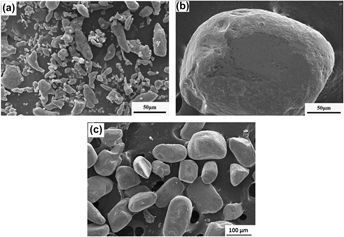Article contents
Performance enrichment on tribological characteristics of powder metallurgy processed aluminium particulate composites by inclusion of rutile (TiO2)
Published online by Cambridge University Press: 13 July 2016
Abstract

A novel approach of powder metallurgy processed, cost-effective, environmentally friendly material, rutile, is proposed as an alternate to the conventional titanium-di-oxide (TiO2) in the process of enhancing tribological behavior of aluminium (Al) based composites. Rutile, also possess good thermal stability which is essential for any material subjected to high temperature applications. The role of rutile (TiO2) in the enrichment of tribological and microhardness properties of aluminium based metal matrix composites is presented. Al matrix composite was reinforced with rutile (TiO2) to the proposed compositions (0, 4%, 8%, 12%, mass fraction) through powder metallurgy route. Wear test was done using pin-on-disc apparatus under dry sliding conditions. The preforms were then characterized using optical microscopy (OM), scanning electron microscope (SEM) and energy-dispersive x-ray spectrometer (EDS). Outcomes suggest that to increase in mass fraction of TiO2, sintered density of the preforms approaches the theoretical density. OM images ratify uniform dispersion of TiO2 implants within the Al matrix. TiO2 offers promising wear and microhardness properties to the proposed composites which attribute to a high dislocation density of deformed planes. Plastic shearing, in conformity with the propagation of shear cracks broke particles as loose fragments which reduces the effective area of contact between the sliding surfaces and reduces loss of material in Al–12% TiO2 composite. Mechanism of wear disclosed through SEM images and EDS patterns concludes that delamination and adhesion dominates the material removal.
Keywords
- Type
- Articles
- Information
- Copyright
- Copyright © Materials Research Society 2016
References
REFERENCES
- 5
- Cited by





